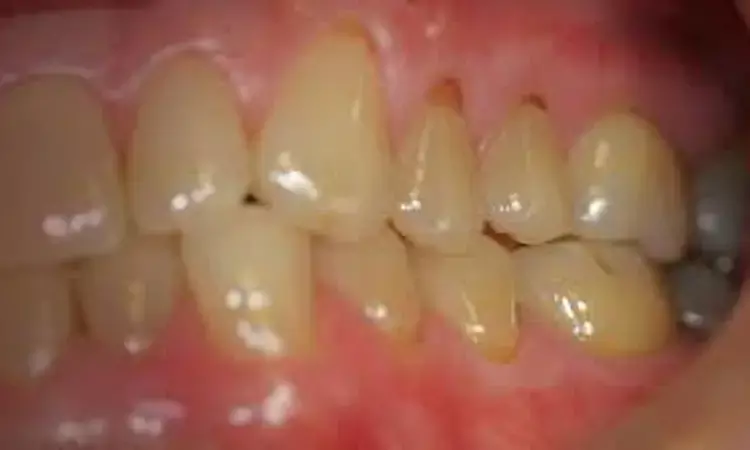- Home
- Medical news & Guidelines
- Anesthesiology
- Cardiology and CTVS
- Critical Care
- Dentistry
- Dermatology
- Diabetes and Endocrinology
- ENT
- Gastroenterology
- Medicine
- Nephrology
- Neurology
- Obstretics-Gynaecology
- Oncology
- Ophthalmology
- Orthopaedics
- Pediatrics-Neonatology
- Psychiatry
- Pulmonology
- Radiology
- Surgery
- Urology
- Laboratory Medicine
- Diet
- Nursing
- Paramedical
- Physiotherapy
- Health news
- Fact Check
- Bone Health Fact Check
- Brain Health Fact Check
- Cancer Related Fact Check
- Child Care Fact Check
- Dental and oral health fact check
- Diabetes and metabolic health fact check
- Diet and Nutrition Fact Check
- Eye and ENT Care Fact Check
- Fitness fact check
- Gut health fact check
- Heart health fact check
- Kidney health fact check
- Medical education fact check
- Men's health fact check
- Respiratory fact check
- Skin and hair care fact check
- Vaccine and Immunization fact check
- Women's health fact check
- AYUSH
- State News
- Andaman and Nicobar Islands
- Andhra Pradesh
- Arunachal Pradesh
- Assam
- Bihar
- Chandigarh
- Chattisgarh
- Dadra and Nagar Haveli
- Daman and Diu
- Delhi
- Goa
- Gujarat
- Haryana
- Himachal Pradesh
- Jammu & Kashmir
- Jharkhand
- Karnataka
- Kerala
- Ladakh
- Lakshadweep
- Madhya Pradesh
- Maharashtra
- Manipur
- Meghalaya
- Mizoram
- Nagaland
- Odisha
- Puducherry
- Punjab
- Rajasthan
- Sikkim
- Tamil Nadu
- Telangana
- Tripura
- Uttar Pradesh
- Uttrakhand
- West Bengal
- Medical Education
- Industry
Nevus- Most prevalent pigmented oral lesion, finds new study

The most prevalent pigmented oral lesion in Thailand is nevus suggests a recent study published in the European journal of dentistry. The aim of this study was to determine the prevalence and clinical features of pigmented oral lesions in Thailand.
Biopsy records of the Department of Oral Pathology, Chulalongkorn University, Department of Oral Diagnosis, KhonKaen University, Department of Oral Biology and Oral Diagnostic Sciences, Chiangmai University, Department of Stomatology, Prince of Songkla University, and Rangsit University were reviewed for oral pigmented lesions diagnosed during 1999 to 2019. Demographic data were culled from the biopsy records. The ages of the patients were subdivided into 10-year intervals. Locations of the lesions were classified as gingiva, labial/buccal mucosa, palate, the floor of the mouth, tongue, as well as a combination of sites. Data were analyzed by descriptive statistics using SPSS version 20.0.
The Results of the study are:
- Of the 47,175 accessioned cases, 241 cases (0.51%) were diagnosed in the category of pigmented oral lesions.
- The age of the patients ranged from 1 month to 88 years with the mean ± standard deviation = 38.74 ± 20.96 years.
- Regarding gender, 172 patients (71.37%) with pigmented lesions were females, while 69 patients (28.63%) were males.
- The female-to-male ratio was 2.49:1.
The majority of the pigmented lesions were encountered at the gingiva (29.88%) followed by labial/buccal mucosa (26.97%), palate (14.94%), lip (10.79%), alveolar mucosa (9.54%), and others (7.88%), respectively. The three most common pigmented oral lesions in the present study were nevus (39.83%), followed by melanotic macule (28.63%) and amalgam tattoo (17.43%), respectively.
Thus, the most common pigmented oral lesion in the present study is nevus. Demographic data of the patients in the present study are in accordance with previous studies with minor differences. Even though pigmented lesions of the oral cavity constitute a small portion of the oral pathology biopsies, accurate diagnosis is important since there is an overlap in the clinical appearance of benign pigmented lesions and melanoma.
Reference:
Kittipong Dhanuthai et al. Pigmented Oral Lesions: A Multicenter Study. CC BY 4.0 · Eur J Dent 2022; 16(02): 315-319. DOI: 10.1055/s-0041-1735790
Dr. Shravani Dali has completed her BDS from Pravara institute of medical sciences, loni. Following which she extensively worked in the healthcare sector for 2+ years. She has been actively involved in writing blogs in field of health and wellness. Currently she is pursuing her Masters of public health-health administration from Tata institute of social sciences. She can be contacted at editorial@medicaldialogues.in.
Dr Kamal Kant Kohli-MBBS, DTCD- a chest specialist with more than 30 years of practice and a flair for writing clinical articles, Dr Kamal Kant Kohli joined Medical Dialogues as a Chief Editor of Medical News. Besides writing articles, as an editor, he proofreads and verifies all the medical content published on Medical Dialogues including those coming from journals, studies,medical conferences,guidelines etc. Email: drkohli@medicaldialogues.in. Contact no. 011-43720751


